- Joined
- Jan 6, 2013
- Messages
- 5,567
- Reaction score
- 11,194
1. The History
Hanging Flat mine is a small lead and fluorspar mine, just west of Stoney Middleton, Derbyshire. Sitting 100 feet above Watergrove sough, for many years the mine appears to have been un-named before being given its current name.
In late 1800s Samuel Needham and his brother lived close by in Hanging Flat House. They worked the mine for lead. The ore was mined on incline and then raised by winch and kimble into the adit which could take half-tonne tubs. However, in the 1950s and early 60s the mine was worked for fluorspar before closing. In 1967 J.Garlick proposed re-opening the mine and it subsequently worked throughout the 70s, apparently with little success, economically. In the 80s ex-Laporte man Roger Ridgeway then look over the mine and worked it with slightly more success, until it finally closed later in the decade circa 1987.
More recently, around 1992, the entrance section was used for filming a "cave rescue" scene for TV Soap Peak Practice (starring Kevin Whately and Amanda Burton) in an episode aptly titled “'Light at the End of the Tunnel”. They left behind a number of big polystyrene 'boulders' throughout the mine.
In terms of the mine itself, it runs northwards for 300 feet until it meets the east-west Needham Rake vein and splits into two branches. The eastern branch to the right leads to the New Gates shaft, which most likely predates Hanging Flat. The internal shaft has timbers around it and is set on area of false floor of steel sheet on girders. If you look down the shaft, you can see the lower level of the mine, 10m below.
To the left the passage has 6 cross-cut slits heading off to the right. These were driven into the vein from the parallel drive and all come to a dead end at a back-fill. Here the vein was drilled and blasted nearly to surface then the fluorspar was loaded out of the slits.
The mine retains the iron pipework that was used to take compressed air to the rock drills. Brown pipes also run through the mine, possibly as part of the ventilation system while smaller-diameter flexible pipes were most likely for water for dust suppression.
2. The Explore
This one hasn’t come up much bar a couple of reports by @PaulPowers. That’s quite surprising given it’s a cracking, photogenic little mine and access is relatively easy. Been doing a lot of walking and exploring around Stoney Middleton so when I discovered this place was located close-by I headed off for a shufty. The entrance is tucked away close to the road. It’s a bit of a tight scramble to get in but the mine soon opens out and thereafter is flat and pretty dry. We spent a good hour-and-a-half in here as although it might be relatively small it’s pretty nice. The right-hand branch goes further than the left passage, but it gets a bit sketchy around the shaft, with collapses and rotting beams. Getting out was a bit more difficult without the aid of gravity and we got a bit mucky but all-in-all it was worth it.
3. The Pictures
Here’s what we were looking for:
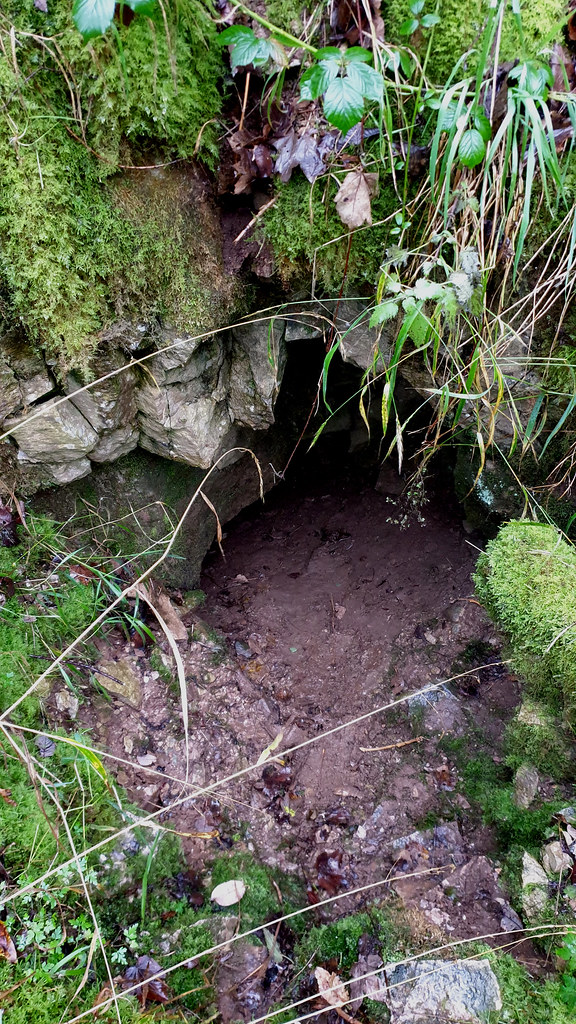 Hangingflat 07 by HughieDW, on Flickr
Hangingflat 07 by HughieDW, on Flickr
It was a bit of a squeeze…
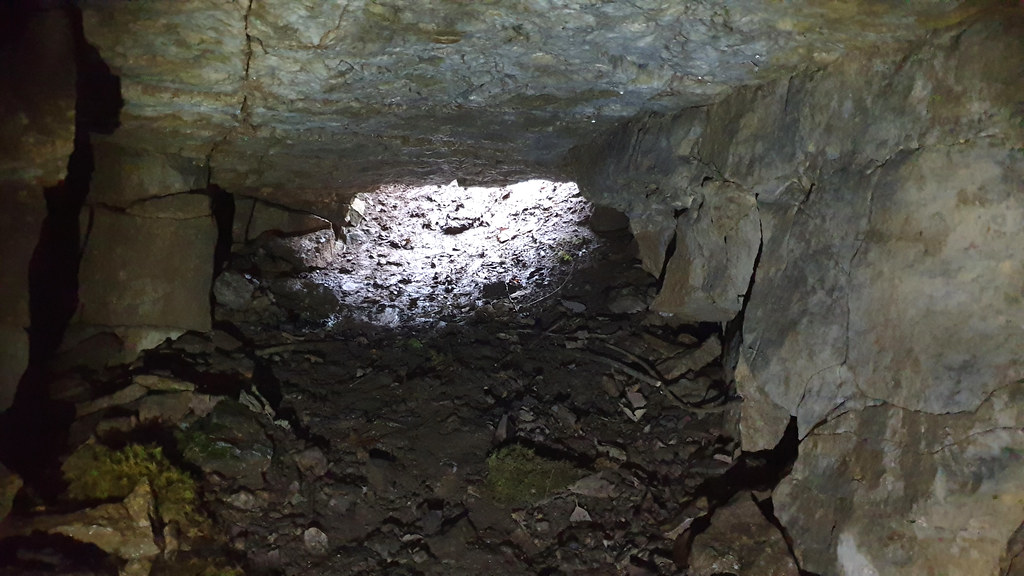 Hangingflat 06 by HughieDW, on Flickr
Hangingflat 06 by HughieDW, on Flickr
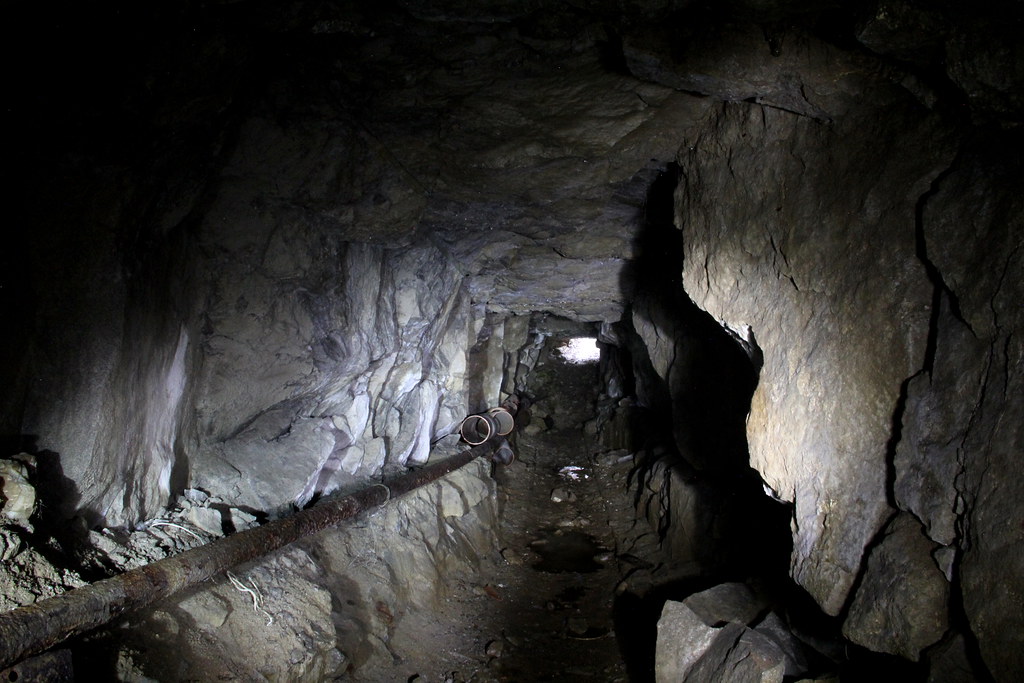 img9740 by HughieDW, on Flickr
img9740 by HughieDW, on Flickr
The compressed air pipes:
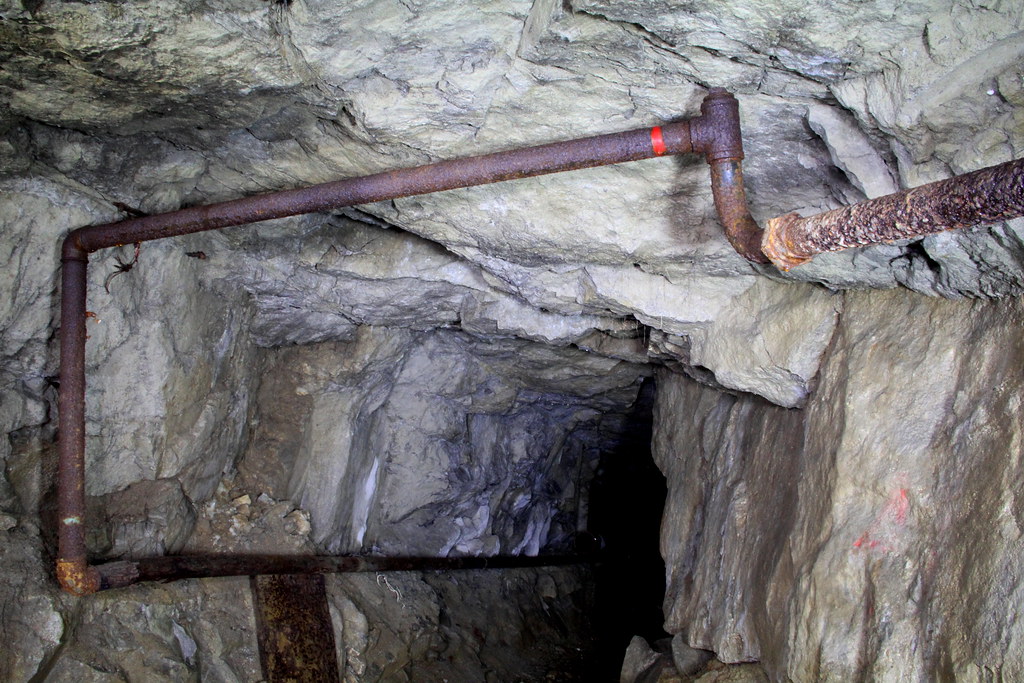 img9742 by HughieDW, on Flickr
img9742 by HughieDW, on Flickr
Left or right first?
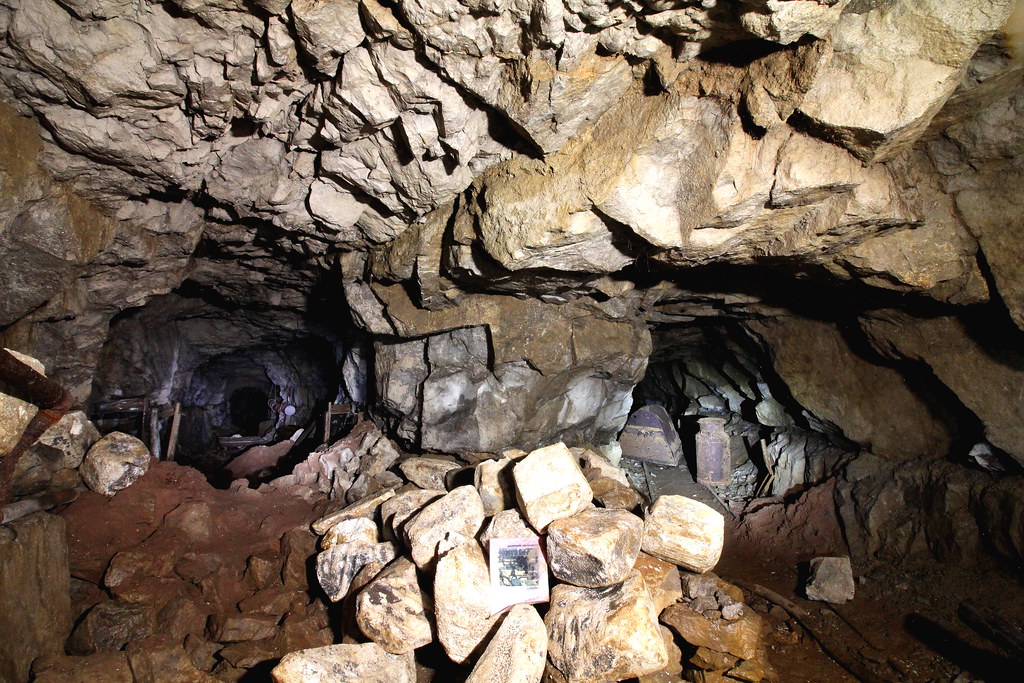 img9770 by HughieDW, on Flickr
img9770 by HughieDW, on Flickr
To the left:
 img9739 by HughieDW, on Flickr
img9739 by HughieDW, on Flickr
Remains of an old cart:
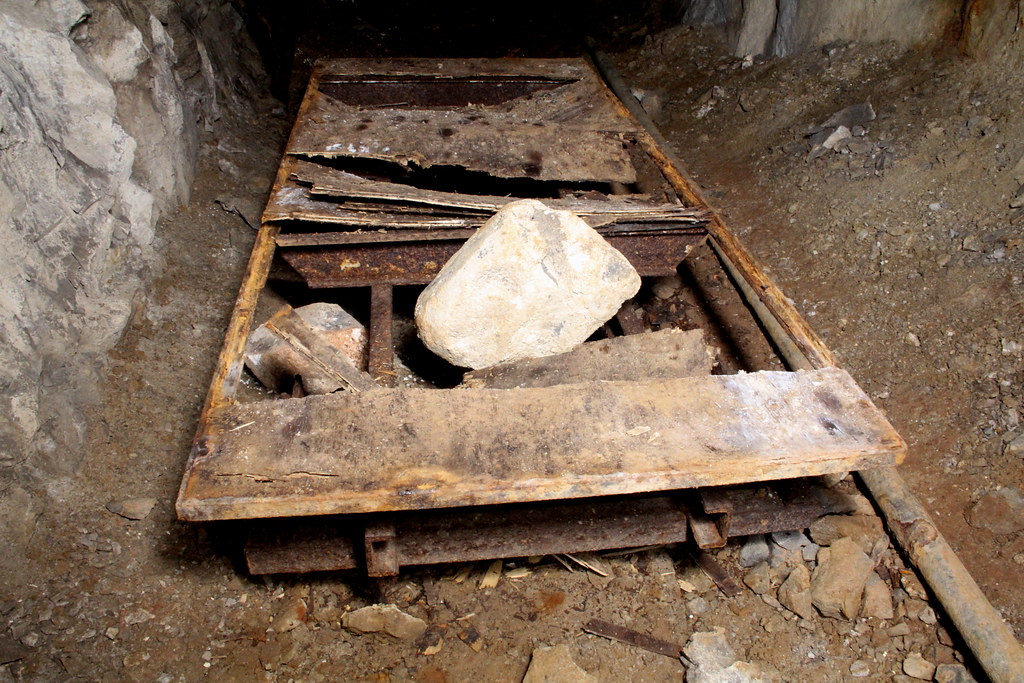 img9736 by HughieDW, on Flickr
img9736 by HughieDW, on Flickr
Rusting mining gear:
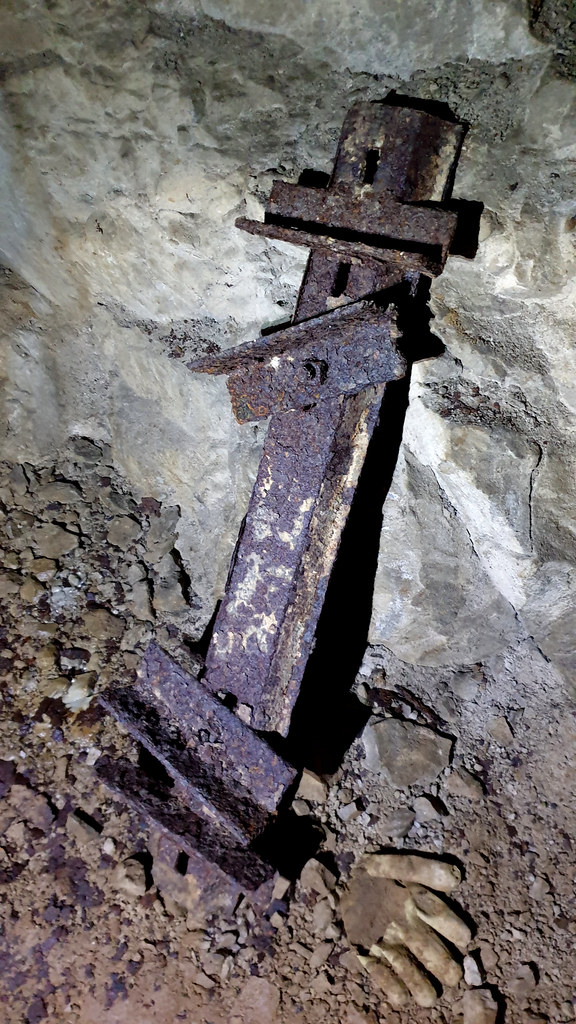 Hangingflat 04 by HughieDW, on Flickr
Hangingflat 04 by HughieDW, on Flickr
Old compressed air cylinder:
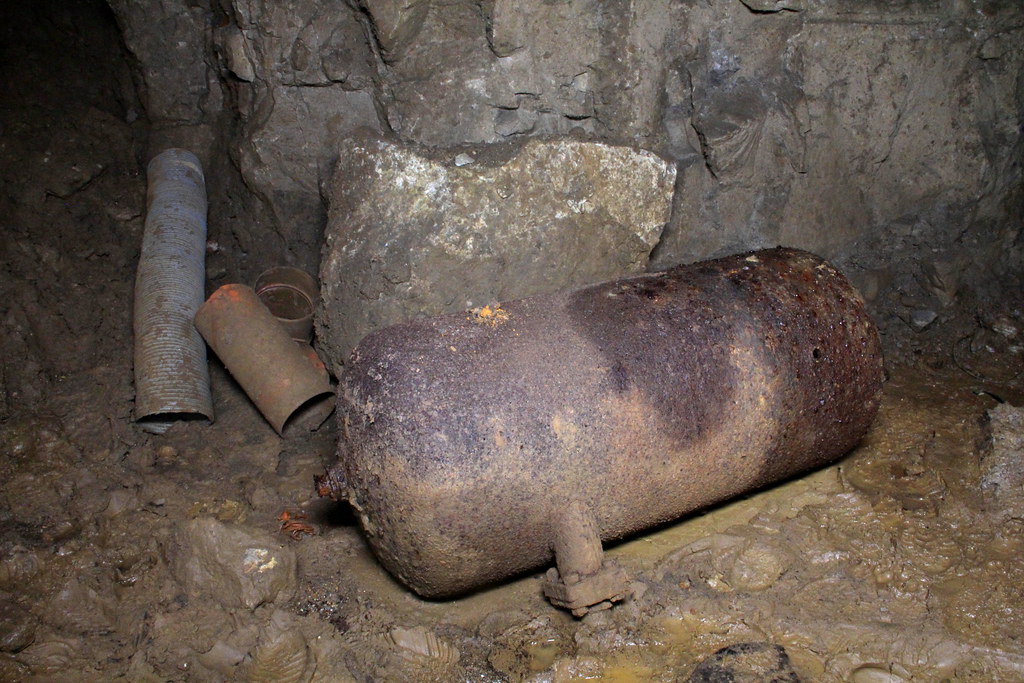 img9731 by HughieDW, on Flickr
img9731 by HughieDW, on Flickr
Minerals leaching in the wall:
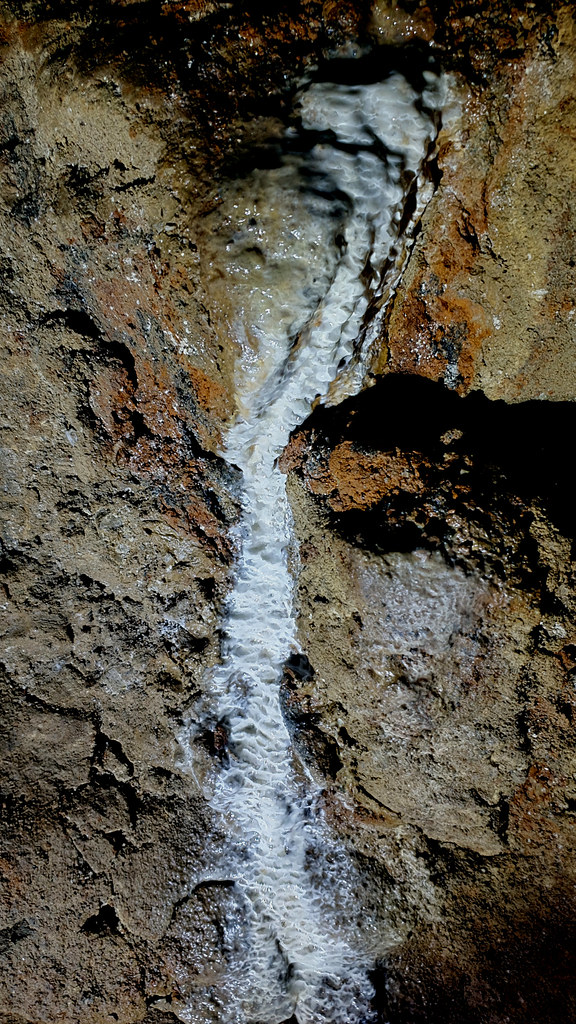 Hangingflat 02 by HughieDW, on Flickr
Hangingflat 02 by HughieDW, on Flickr
On we go:
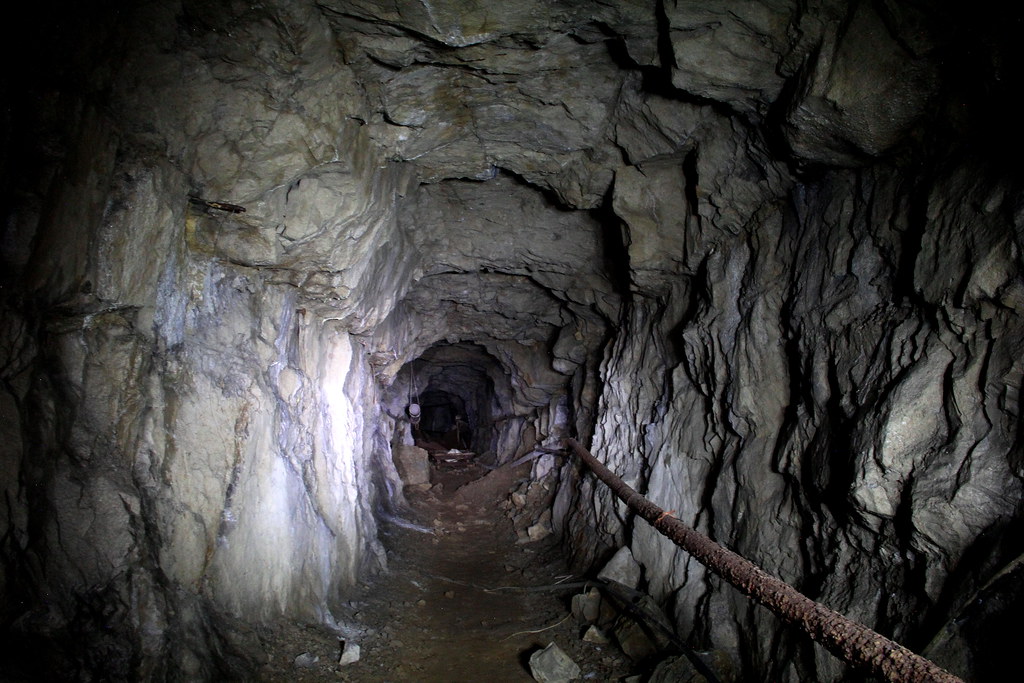 img9733 by HughieDW, on Flickr
img9733 by HughieDW, on Flickr
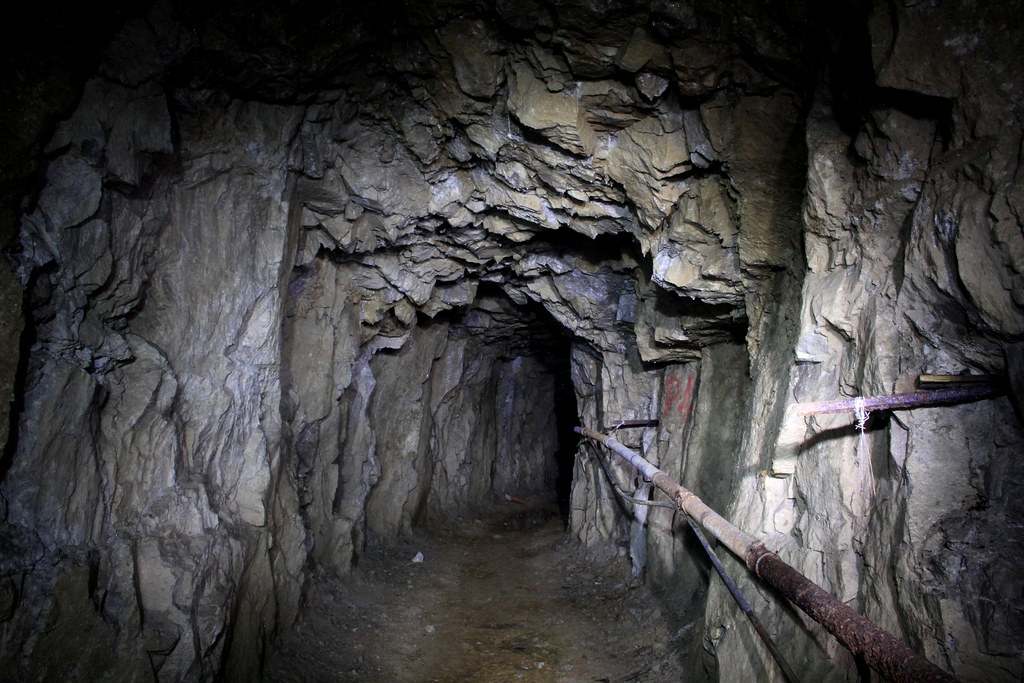 img9732 by HughieDW, on Flickr
img9732 by HughieDW, on Flickr
One of the six cross-cut slits:
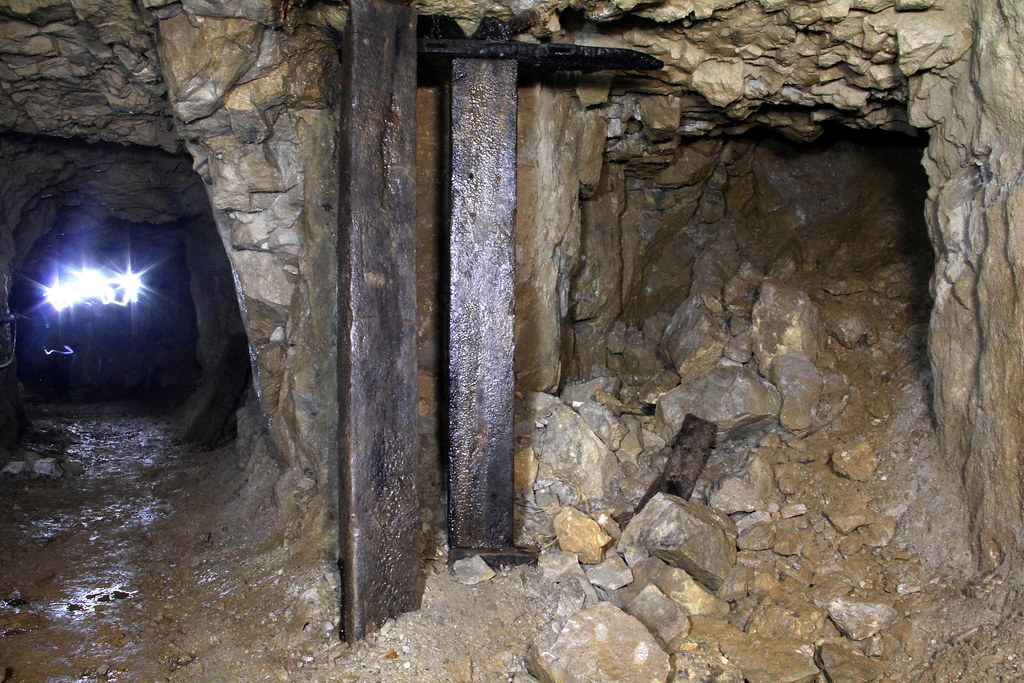 img9728 by HughieDW, on Flickr
img9728 by HughieDW, on Flickr
And back out we go:
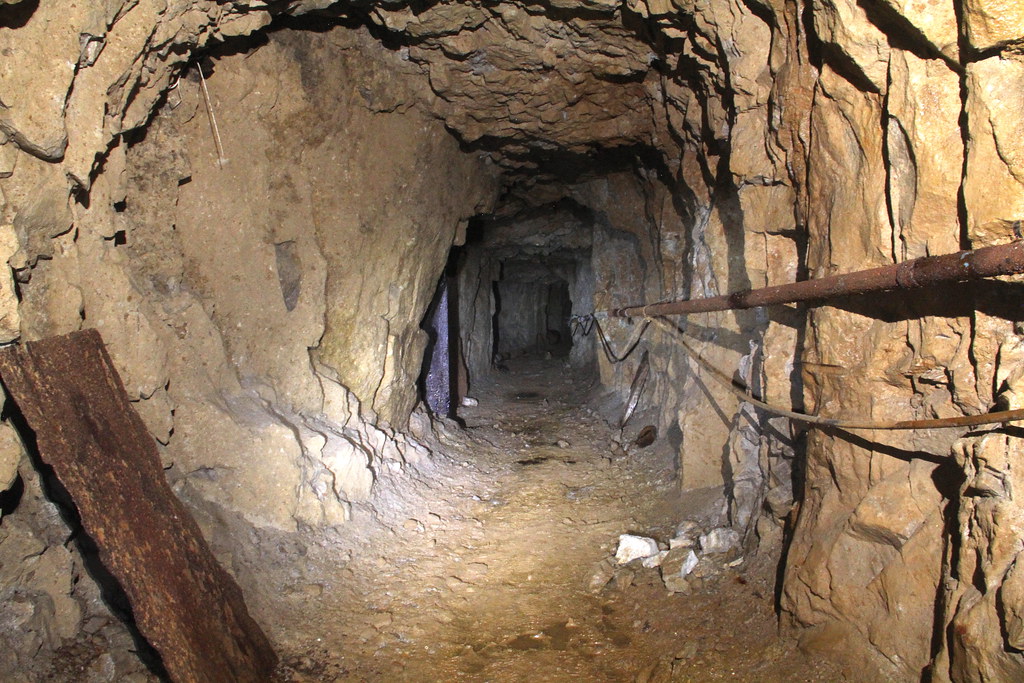 img9727 by HughieDW, on Flickr
img9727 by HughieDW, on Flickr
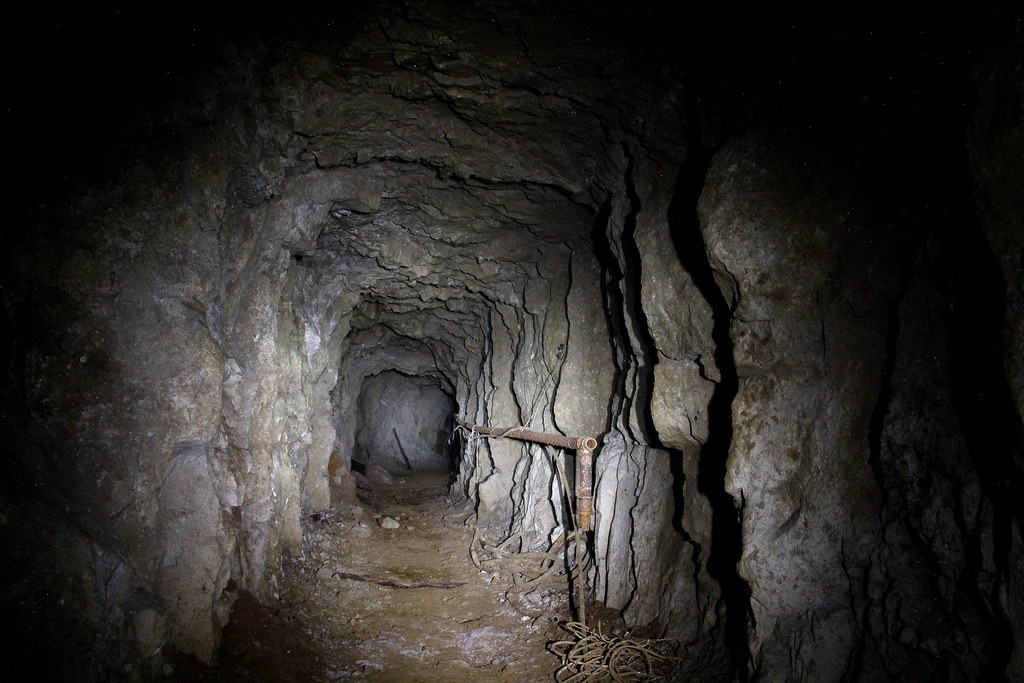 img9718 by HughieDW, on Flickr
img9718 by HughieDW, on Flickr
On to the right-hand passage:
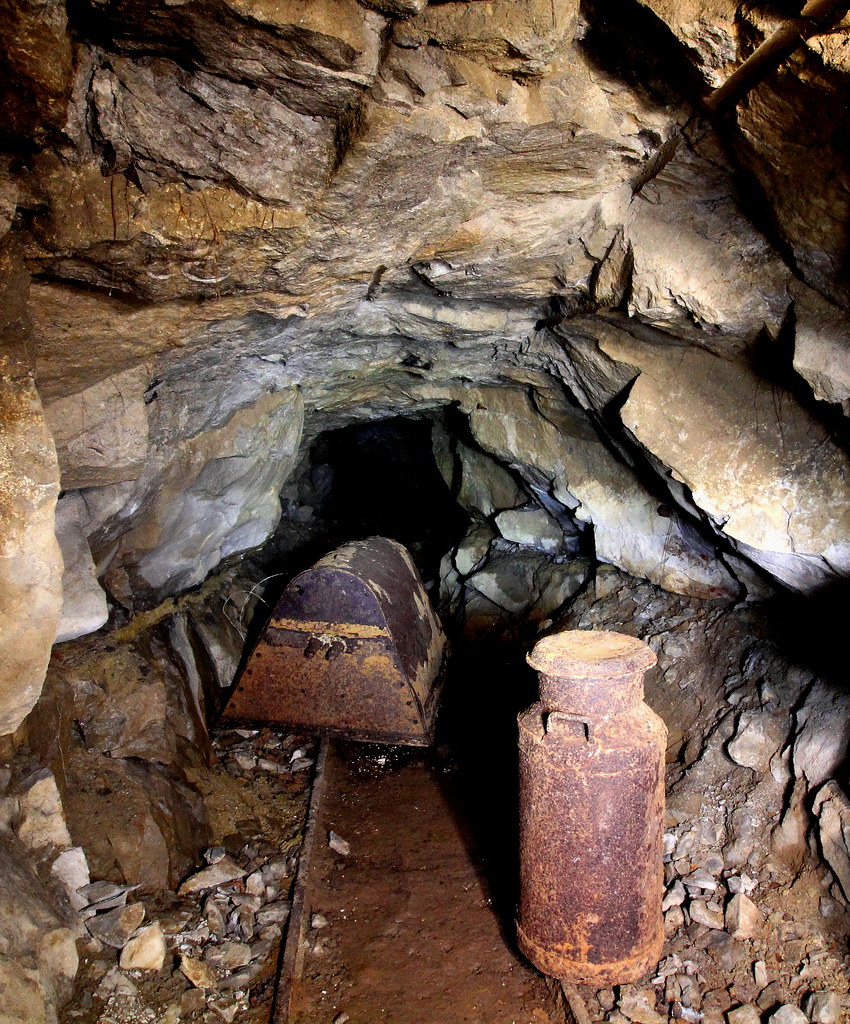 img9767 by HughieDW, on Flickr
img9767 by HughieDW, on Flickr
Close-up of the tipper:
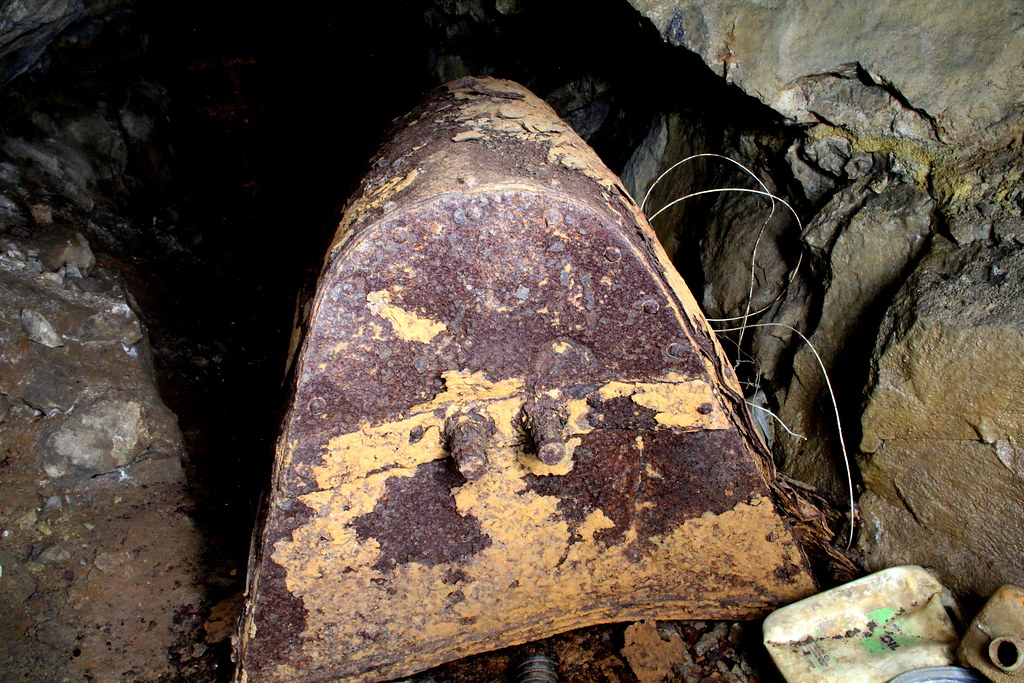 img9749 by HughieDW, on Flickr
img9749 by HughieDW, on Flickr
Side passage to an elevated working:
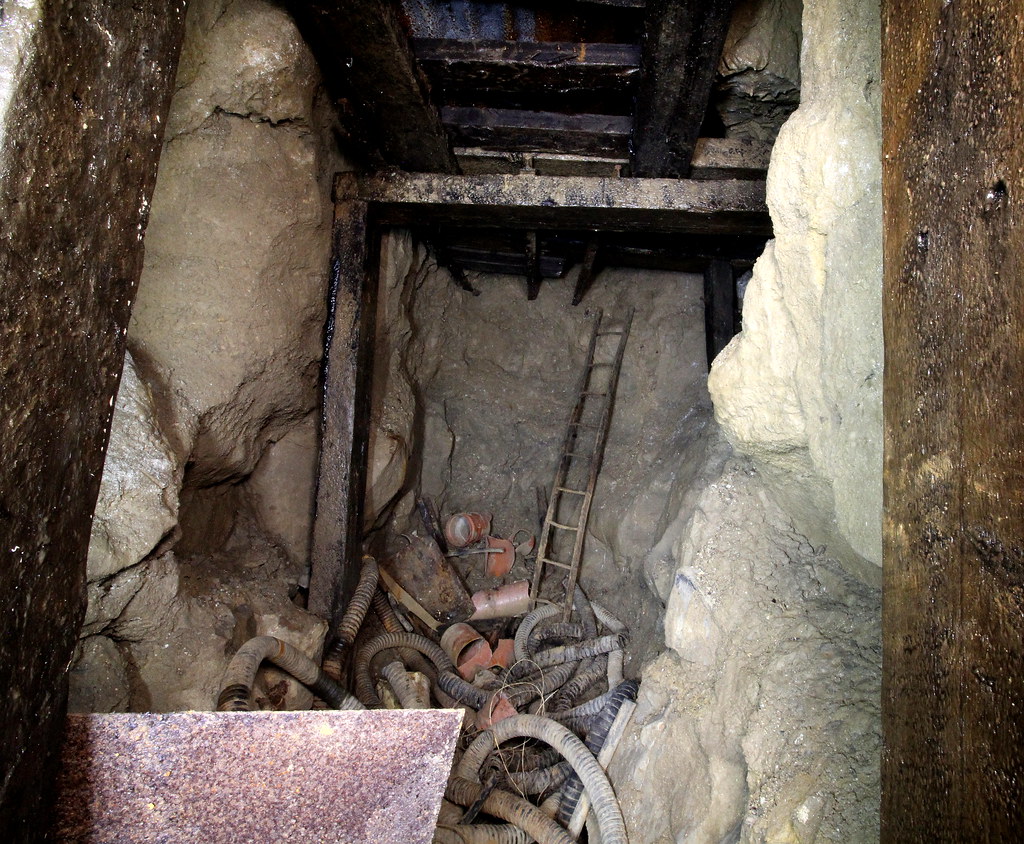 img9763 by HughieDW, on Flickr
img9763 by HughieDW, on Flickr
Deeper in we go:
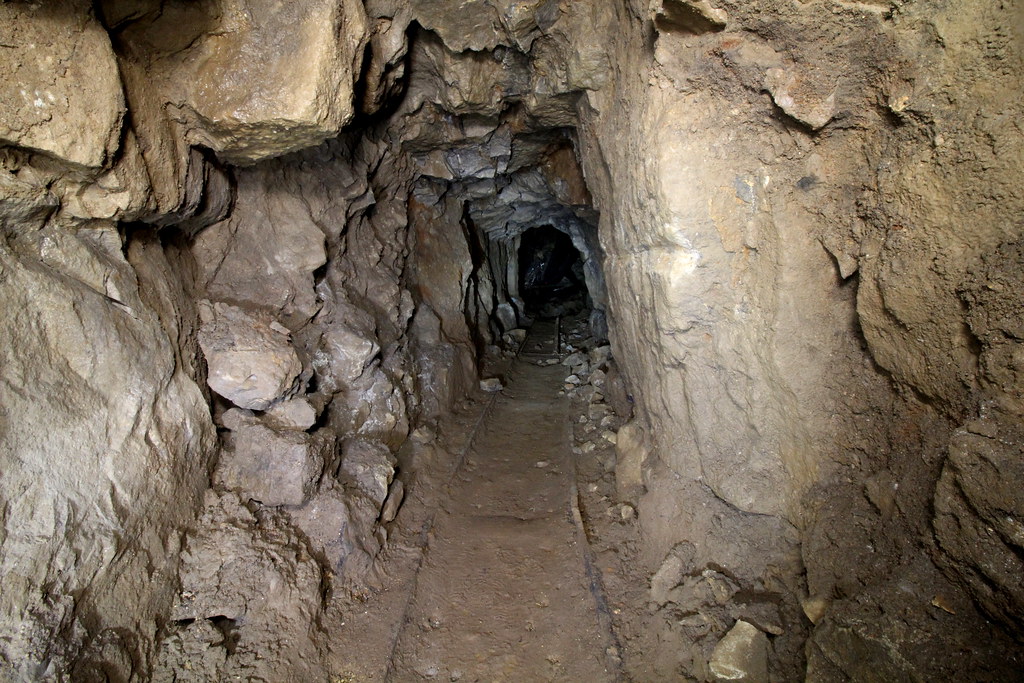 img9760 by HughieDW, on Flickr
img9760 by HughieDW, on Flickr
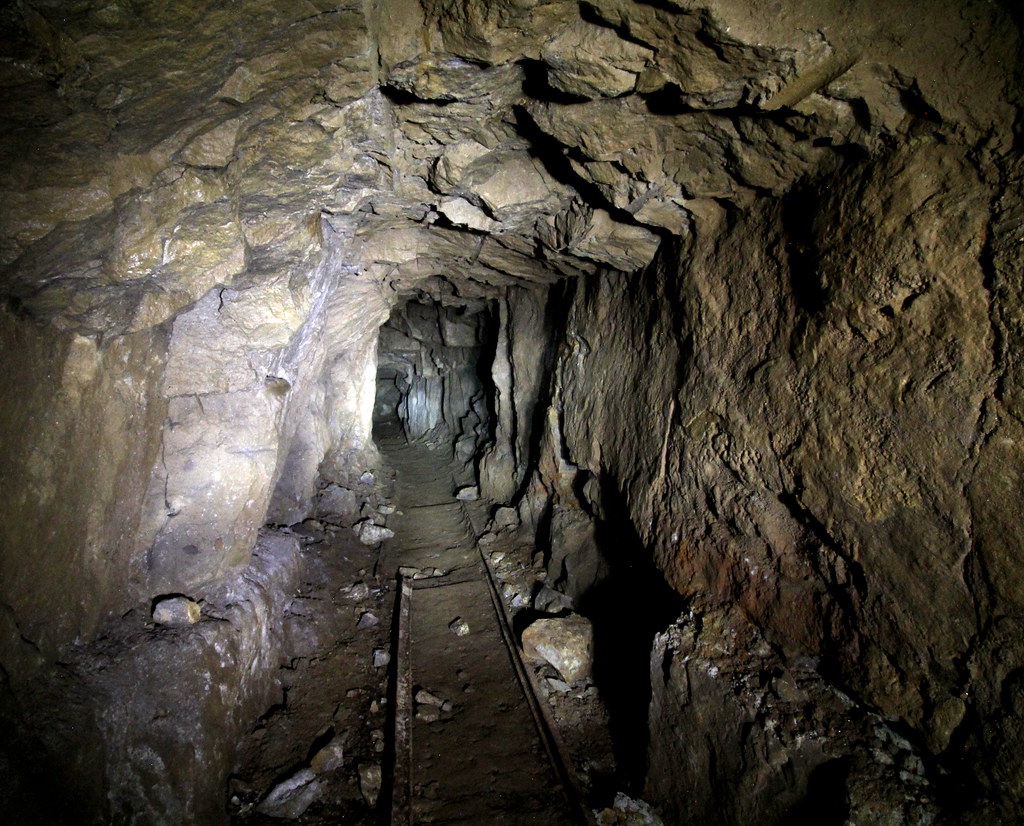 img9758 by HughieDW, on Flickr
img9758 by HughieDW, on Flickr
This is where it starts to get a bit sketchy:
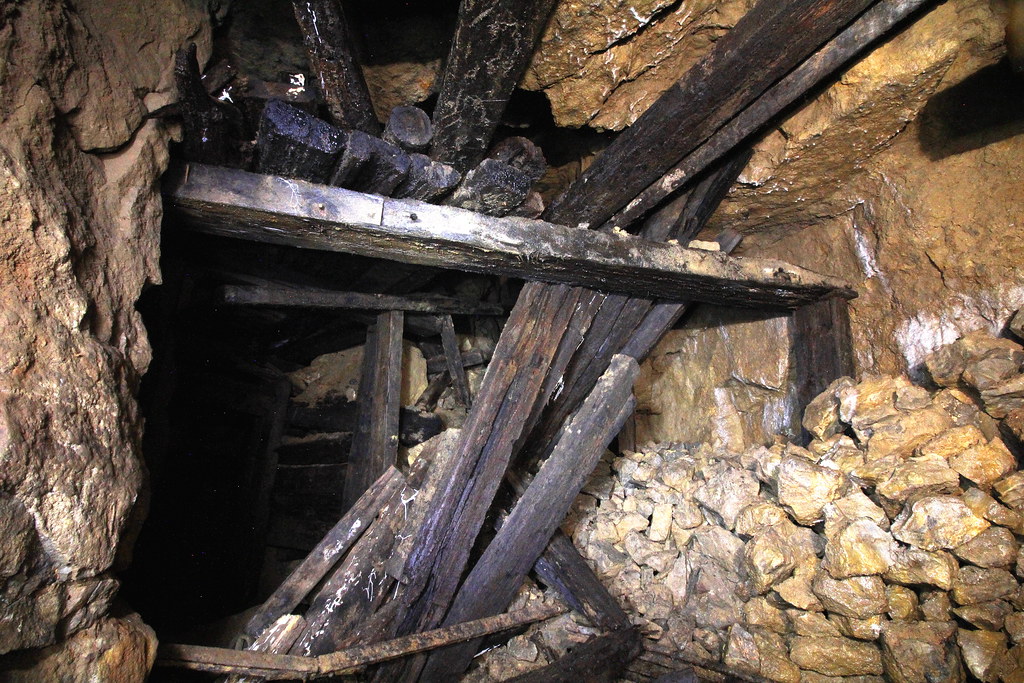 img9755 by HughieDW, on Flickr
img9755 by HughieDW, on Flickr
Hanging Flat mine is a small lead and fluorspar mine, just west of Stoney Middleton, Derbyshire. Sitting 100 feet above Watergrove sough, for many years the mine appears to have been un-named before being given its current name.
In late 1800s Samuel Needham and his brother lived close by in Hanging Flat House. They worked the mine for lead. The ore was mined on incline and then raised by winch and kimble into the adit which could take half-tonne tubs. However, in the 1950s and early 60s the mine was worked for fluorspar before closing. In 1967 J.Garlick proposed re-opening the mine and it subsequently worked throughout the 70s, apparently with little success, economically. In the 80s ex-Laporte man Roger Ridgeway then look over the mine and worked it with slightly more success, until it finally closed later in the decade circa 1987.
More recently, around 1992, the entrance section was used for filming a "cave rescue" scene for TV Soap Peak Practice (starring Kevin Whately and Amanda Burton) in an episode aptly titled “'Light at the End of the Tunnel”. They left behind a number of big polystyrene 'boulders' throughout the mine.
In terms of the mine itself, it runs northwards for 300 feet until it meets the east-west Needham Rake vein and splits into two branches. The eastern branch to the right leads to the New Gates shaft, which most likely predates Hanging Flat. The internal shaft has timbers around it and is set on area of false floor of steel sheet on girders. If you look down the shaft, you can see the lower level of the mine, 10m below.
To the left the passage has 6 cross-cut slits heading off to the right. These were driven into the vein from the parallel drive and all come to a dead end at a back-fill. Here the vein was drilled and blasted nearly to surface then the fluorspar was loaded out of the slits.
The mine retains the iron pipework that was used to take compressed air to the rock drills. Brown pipes also run through the mine, possibly as part of the ventilation system while smaller-diameter flexible pipes were most likely for water for dust suppression.
2. The Explore
This one hasn’t come up much bar a couple of reports by @PaulPowers. That’s quite surprising given it’s a cracking, photogenic little mine and access is relatively easy. Been doing a lot of walking and exploring around Stoney Middleton so when I discovered this place was located close-by I headed off for a shufty. The entrance is tucked away close to the road. It’s a bit of a tight scramble to get in but the mine soon opens out and thereafter is flat and pretty dry. We spent a good hour-and-a-half in here as although it might be relatively small it’s pretty nice. The right-hand branch goes further than the left passage, but it gets a bit sketchy around the shaft, with collapses and rotting beams. Getting out was a bit more difficult without the aid of gravity and we got a bit mucky but all-in-all it was worth it.
3. The Pictures
Here’s what we were looking for:
 Hangingflat 07 by HughieDW, on Flickr
Hangingflat 07 by HughieDW, on FlickrIt was a bit of a squeeze…
 Hangingflat 06 by HughieDW, on Flickr
Hangingflat 06 by HughieDW, on Flickr img9740 by HughieDW, on Flickr
img9740 by HughieDW, on FlickrThe compressed air pipes:
 img9742 by HughieDW, on Flickr
img9742 by HughieDW, on FlickrLeft or right first?
 img9770 by HughieDW, on Flickr
img9770 by HughieDW, on FlickrTo the left:
 img9739 by HughieDW, on Flickr
img9739 by HughieDW, on FlickrRemains of an old cart:
 img9736 by HughieDW, on Flickr
img9736 by HughieDW, on FlickrRusting mining gear:
 Hangingflat 04 by HughieDW, on Flickr
Hangingflat 04 by HughieDW, on FlickrOld compressed air cylinder:
 img9731 by HughieDW, on Flickr
img9731 by HughieDW, on FlickrMinerals leaching in the wall:
 Hangingflat 02 by HughieDW, on Flickr
Hangingflat 02 by HughieDW, on FlickrOn we go:
 img9733 by HughieDW, on Flickr
img9733 by HughieDW, on Flickr img9732 by HughieDW, on Flickr
img9732 by HughieDW, on FlickrOne of the six cross-cut slits:
 img9728 by HughieDW, on Flickr
img9728 by HughieDW, on FlickrAnd back out we go:
 img9727 by HughieDW, on Flickr
img9727 by HughieDW, on Flickr img9718 by HughieDW, on Flickr
img9718 by HughieDW, on FlickrOn to the right-hand passage:
 img9767 by HughieDW, on Flickr
img9767 by HughieDW, on FlickrClose-up of the tipper:
 img9749 by HughieDW, on Flickr
img9749 by HughieDW, on FlickrSide passage to an elevated working:
 img9763 by HughieDW, on Flickr
img9763 by HughieDW, on FlickrDeeper in we go:
 img9760 by HughieDW, on Flickr
img9760 by HughieDW, on Flickr img9758 by HughieDW, on Flickr
img9758 by HughieDW, on FlickrThis is where it starts to get a bit sketchy:
 img9755 by HughieDW, on Flickr
img9755 by HughieDW, on Flickr


